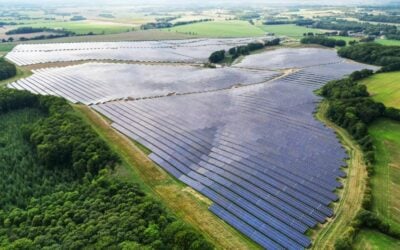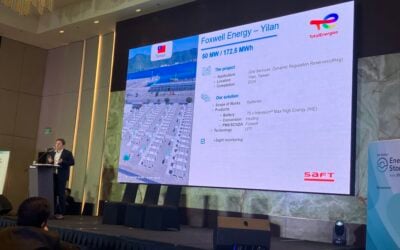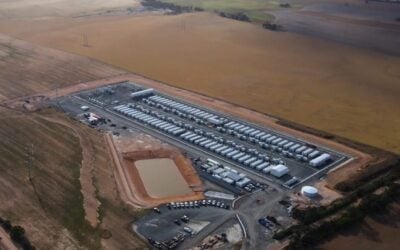AES, its partners and guests including TenneT and the European Commission attended yesterday’s ribbon-cutting official launch ceremony. Image: AES Energy Storage.
Holland’s national grid operator has said that batteries will be an “excellent alternative” to conventional power plants in providing balancing services, especially as a complement to increased solar and wind deployment.
Gineke van Dijk of TenneT, which serves 41 million end users in the Netherlands and Germany as a transmission system operator (TSO), was speaking at the official unveiling of the AES Netherlands Advancion Energy Storage Array, in Vlissingen in the south west of Holland.
The 10MW array has been grid-connected since mid-January, adding an effective 20MW of flexibility resource to the network, as it can absorb as well as feed power in to the grid. The system will match supply and demand on the local grid by using power stored in its batteries to respond quickly to grid imbalances.
This means that it can be used to smooth out the variability of renewable energy output as it goes onto TenneT’s high voltage transmission network and make existing conventional generation sources dispatchable while providing more grid-specific ancillary services such as primary control reserve (PCR) which require fast response times. The facility will compete in the market for the right to provide these services in Holland, Germany, Switzerland and Austria.
Enjoy 12 months of exclusive analysis
- Regular insight and analysis of the industry’s biggest developments
- In-depth interviews with the industry’s leading figures
- Annual digital subscription to the PV Tech Power journal
- Discounts on Solar Media’s portfolio of events, in-person and virtual
“This AES investment fits perfectly into TenneT’s vision that grid stability should be less dependent on large conventional power plants in the future,” van Dijk, who is TenneT’s senior manager for customers and markets, said at the launch.
“If wind and solar energy continue to increase, batteries will be an excellent alternative to take over this role of power plants.”
In related news, Dutch electricity and gas supplier Eneco launched a software-defined power plant in the country last November, which can integrate up to 100MW of distributed generation resources into the network, including CHP and industrial demand side response.
Gas peaker plants, as well as pumped hydro, could find their role displaced long term by battery-based energy storage. Image: wikimedia User: Jim Henderson.
European Commission also welcomes energy storage ‘breakthrough’
The launch yesterday was also attended by the European Commission’s head of unit for new energy technologies, innovation and clean coal, Andreea Strachinescu. Strachinescu was similarly enthusiastic and emphasised the role of such projects in developing appropriate markets for energy storage and other flexibility resources and proving the systems’ effectiveness.
“An ever growing number of renewable energy sources in Europe will require breakthrough technologies for grid stabilisation and balancing. Electrical energy storage can play a key role in the enhanced use of renewable energy and development of smart grids in Europe,” Strachinescu said.
“Emerging market models such as AES’ will be pivotal for large-scale deployment of electrical energy storage in Europe.”
The AES system, which is built on the Advancion 4 energy storage platform sold by AES, utilises more than 45,000 Samsung SDI lithium ion batteries, inverters from Parker Hannifin and balance of plant components from DELTA Infra and its suppliers.
Today, AES held another launch, this time for its array in Kilroot, Northern Ireland, in the UK, also a 10MW Advancion-based system.
AES’ Steve Corwell has previously blogged for Energy Storage News on the direct competitive comparison between battery-based energy storage and pumped hydro. Meanwhile the CEO of Fortune 200 renewable energy supplier NextEra Energy, which has over 45GW of resources in operation said last year that he was seeing tremendous growth in the grid-scale energy storage market and foresaw batteries completely replacing gas peaker plants, which traditionally provide grid-balancing services in the US and elsewhere.
Similarly, a whitepaper produced by Energy Strategies Group (ESG) in 2015 pitted flow batteries by ViZn Energy against peaker plants and found them to be a “viable substitute”.
Detail from the interior of AES’ array in Kilroot, Northern Ireland. Image: AES.





